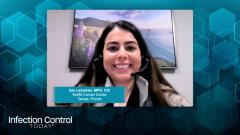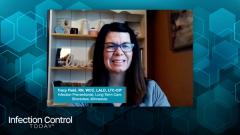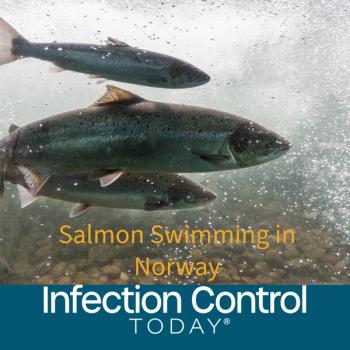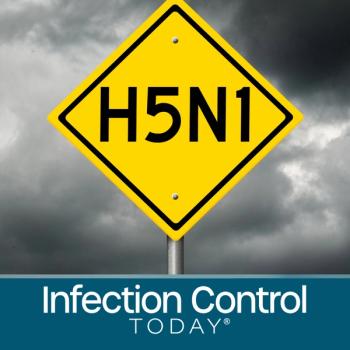
PPE Considerations Surrounding Surgical Smoke and Transmissible Viruses
Isis Lamphier, MPH, CIC, reviews PPE considerations relating to surgical smoke and Tracy Field, RN, WCC, LALD, LTC- CIP shares her thoughts on the universality of masks and other protective equipment for transmissible viruses.
Episodes in this series

Heather Saunders, MPH, RN, CIC: Now Isis, I know that at Moffitt [Cancer Center, Tampa, Florida], you mentioned, you do surgeries. Surgical smoke has been something that has become a little bit more of a concern, the smoke that’s given off by surgical tools. I know ARRN just recently released another guideline recommending the use of respiratory protection to protect against surgical smoke inhalation. Could you just discuss a little bit about the permeability of N95 respiratory or respirators versus surgical masks in relation to protecting against surgical smoke?
Isis Lamphier, MPH, CIC: Surgical smoke is a gaseous byproduct when tissue is dissected or cauterized by those heat-generating devices, such as lasers and respirators. They can filter those small particles that are released in the air caused by surgical smoke. Surgical masks are used to help prevent contamination of the work environment or sterile field from those larger particles generated by the wearer such as from spit or mucus. Surgical masks instead should be used to help reduce the risk of splashes or sprays of blood and body fluids and also protect the wearer’s mouth and nose. They wouldn’t be appropriate in order to protect from surgical smoke.
Heather Saunders, MPH, RN, CIC: Thank you so much for clarifying that. I know influenza and RSV have been more rampant in different parts of the country over the past several months. What are we doing inside of our healthcare facilities to prevent and control the spread of influenza and RSV, and particularly how are we using personal protective equipment to prevent and control the spread of these?
Tracy Field, RN, WCC, LALD, LTC-CIP: I would say that we're more prepared now than we ever were. The education is really out there. We've educated not only the healthcare setting, but a lot of education out to the community. I think people are more self-aware when they have symptoms, and what they need to do about it. Can they go to work? Should they wear a mask at the grocery store? People are really paying more attention to that in healthcare. I think the identification of symptoms and putting somebody on isolation to prevent the spread is key. But I think we're more prepared now than we ever were.
Isis Lamphier, MPH, CIC: Yes, I agree with Tracy. We understand how the flu transmits and we understand those key prevention efforts such as the flu vaccine, and also recommending that patients wear a mask if they have those flu-like symptoms. And we know that hand hygiene is critical for flu prevention. So, I think we are well-equipped to handle all of our flu season.
Heather Saunders, MPH, RN, CIC: That's great. What about for the general public? I know the general public is a little nervous about some of the increases that they've seen not just in COVID, but flu and RSV over the past several months. There's been questions about how they should use personal protective equipment to prevent and control the spread of infection. Do you have any thoughts on that?
Tracy Field, RN, WCC, LALD, LTC-CIP: Yes. I would say that just in the aspect of the availability, the availability of masks that the general public can actually purchase, was kind of not a thing before COVID, or it would be very rare that somebody could purchase personal protective equipment. So having COVID tests at home and the awareness of hand hygiene, all of that put together has really changed the world, I think.
Isis Lamphier, MPH, CIC: For the general public, I would also recommend to stay at home if you're not feeling well. If you are immunocompromised, discuss with your doctor any additional steps that you might take in order to protect yourself from flu season. For example, you might be requested to wear a mask or stay home during those peak flu points in the season. So, it's very critical to understand how flu is transmitting and those numbers in the community, as well as performing hand hygiene when you're out in the community.
Heather Saunders, MPH, RN, CIC: What about the quality of personal protective equipment? In your experience, what should clinicians be concerned about when looking at the quality of the equipment that they're using?
Tracy Field, RN, WCC, LALD, LTC-CIP: Well, just making sure that there's no wear and tear, of course. And making sure that it's a product that is well known and not something that's being sold off the streets or something like that. We want the quality grade and something that's OSHA approved.
Isis Lamphier, MPH, CIC: Yes, clinicians should ensure that the PPE that they're wearing has undergone quality requirements and testing, as well, in order to protect them from any hospital-acquired infections, and to prevent spreading infections, as well.
Heather Saunders, MPH, RN, CIC: Great, thank you. I know that this was a big problem during the COVID pandemic when we were really short on PPE and had to pay attention to whether the equipment that we were getting was, in fact, quality personal protective equipment that was protecting our healthcare workers, as well as other individuals. So, speaking of the COVID pandemic, that brought about the use of PPE and masks, not just in healthcare, but in the public, and really put a spotlight on that, like we were just discussing about the shortages of personal protective equipment. So, can you talk about how practice has changed or shifted, since the COVID pandemic, in light of all that we've seen?
Isis Lamphier, MPH, CIC: Since the COVID pandemic, PPE is more commonly accepted in hospitals and healthcare facilities, and we actually even saw some healthcare workers wanting to use PPE more than necessary, more than they needed to, in order to ensure that they were protected. So, we definitely saw a shift and more of a reliance on PPE. Healthcare workers wanted to wear that PPE in order to protect them, and it was important to educate them and let them know when PPE was necessary and when it wasn't necessary.
Tracy Field, RN, WCC, LALD, LTC-CIP: I agree with you, Isis, and then also just the lack of knowledge that there used to be on how to wear it, how to doff, when to wear it, why we wear it. All of those things have really come a long way as far as teaching providers in healthcare settings.
Isis Lamphier, MPH, CIC: That's a good point, Tracy, because we did have to reeducate some of our healthcare workers and teaching them how to properly don and doff because we know that we can also spread contamination that way. And also, removing our PPE at the right time, right after we see a patient, before stepping back into the hallway, where there's other patients or other workers present.
Heather Saunders, MPH, RN, CIC: Sounds like there was a lot of confusion amidst the healthcare workers about what is the best practice in wearing the personal protective equipment, how much personal protective equipment to wear. I know I saw a lot of that myself.
Transcript edited for clarity
Newsletter
Stay prepared and protected with Infection Control Today's newsletter, delivering essential updates, best practices, and expert insights for infection preventionists.











